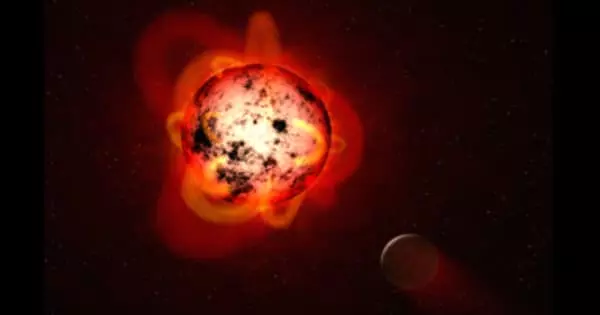According to recent research from the University of British Columbia, material from undersea volcanic eruptions during the Bronze Age is helping scientists better comprehend the scale, dangers, and climate impact of their parent eruptions.
A semi-submerged volcano eruption in the southern Aegean Sea some 3,600 years ago wreaked havoc on the island of Santorini, spewing ash, rocks, and gas into the atmosphere and leaving kilometer-long terraces of sediment on the seafloor.
The cataclysmic eruption and others like it have historically been linked to sudden changes in climate. But the minor climate impacts of more recent underwater volcanic eruptions, like that of Hunga Tonga-Hunga Ha’apai in 2022, have put that theory in doubt.
These large caldera-forming eruptions are now being better understood thanks to a multi-year study of ancient Santorini volcano deposits, which is also revealing new information on how future eruptions might affect the climate of the planet.
Massive volcanic eruption columns, which reach tens of kilometers into the atmosphere, travel through shallow oceans as jets of ash, boulders, and gases. However, it is unknown exactly how and how much of that material is subsequently transferred to the sea surface or the ground.
The limits this study has uncovered will guide a next generation of hydrovolcanic climate models aimed at understanding how the mass partitioning properties of eruptions like Hunga Tonga-Hunga Ha’apai as well as the largest and most impressive volcanic phenomena in the geological record minimize their effects on climate change.
Dr. Mark Jellinek
“We’ve proved the architecture of volcanic deposits in subaerial and submarine settings can be used to quantitatively constrain the dynamics of the eruption that occurred there, including the vent source and environmental conditions,” said University of British Columbia (UBC) researcher Dr. Johan Gilchrist, lead author the study published in Nature Geoscience.
“The study also provides crucial lower bounds on eruption strength, jet heights and frequencies and sizes of the sedimentation waves linked to terraced deposits. That will help us predict the evolution of hazards during these caldera-forming eruptions and understand the surprisingly small climate impact of similar events.”
With UBC Earth and planetary scientist Dr. Mark Jellinek, Dr. Gilchrist analyzed the concentric terraces that remain around the Santorini calder- historically called the Minoan eruption.
They found that, consistent with previous terraced caldera deposits, the terrace widths diminish with increasing distance from the vent and slope upward toward the caldera wall. Additionally, compared to calderas from subaerial or submarine eruptions, the terraces close to the caldera rim are far wider.
Dr. Gilchrist had a hunch that sedimentation waves collapsing periodically around the volcanic jet spread where they impacted the water surface during shallow submarine eruptions.
The researchers imitated the undersea Minoan eruption by injecting particles into shallow water layers in order to test their theory. The studies demonstrated that, depending on the severity of the eruption and the depth of the water, the descending sedimentation waves produced by shallow water eruptions can impact and propagate at the sea surface to produce tsunamis as well as scour the seafloor.
A fingerprint of the eruption’s events, the size of the sedimentation waves, and their interactions with the ocean and seafloor, were left behind by the terraced deposits.
“The limits this study has uncovered will guide a next generation of hydrovolcanic climate models aimed at understanding how the mass partitioning properties of eruptions like Hunga Tonga-Hunga Ha’apai as well as the largest and most impressive volcanic phenomena in the geological record minimize their effects on climate change,” said Dr. Jellinek.
Added Dr. Gert Lube, a volcanologist with Massey University not involved in the study: “For the case of three submarine caldera-forming eruptions, this study provides the first direct relationships between the deposit architecture and parental eruption conditions. The results of this study are intriguing and could possibly be extended to non-marine, caldera-forming and smaller eruption events.”
















